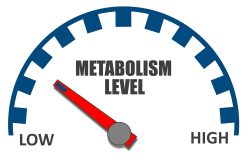 It is easy to remember the time when you could eat just about anything and not see weight gain. However, a recent study has suggested that your metabolism which is the rate your body burns calories, in reality peaks much earlier than has been thought and that its decline is later than is thought.
It is easy to remember the time when you could eat just about anything and not see weight gain. However, a recent study has suggested that your metabolism which is the rate your body burns calories, in reality peaks much earlier than has been thought and that its decline is later than is thought.
As people age, a lot of physiological changes will occur in the different phases of a life such as puberty and menopause. What the team has found to be odd, is the timing of the metabolic stages of life don’t seem to match the markers we link to growing up and aging.
The two teams consisted of international scientists who looked at average calories that were burned by over 6,600 people who went along their day-to-day lives. The ages ranged from just one week to age 95 and the participants were from 29 different countries.
Earlier studies that were this large measured the amount of energy the body utilizes for its basic functions that are vital to living such as digesting, breathing and pumping blood. However, these basic functions only account for 50% to 70% of calories that are burned every day. These are things like walking your dog, sweating at the gym, dish washing and even fidgeting and thinking.
In order to find a number for a total of expenditures daily, the team looked at the “doubly labeled water” method. This is a urine test which involves a person drinking water in which the oxygen and hydrogen contained in the molecules in the water have been changed to heavy forms that are natural and then measures the rate at which they are flushed out.
Researchers have used this method which is considered a gold standard for daily energy expenditure measures throughout a normal day-to-day life outside a lab, to measure the human energy expenditures in people since the 1980’s. However, earlier studies were limited in scope and size mostly due to their cost. In order to overcome this limitation, a variety of labs shared their own data in one single database in order to seek out truths that were hidden or just hinted at in earlier studies. Analyzing and pooling energy expenditures throughout the total lifespan showed some surprises.
There are people who believe that in their teens and even 20’s as they age the potential of calorie burning will hit its peak. However, the research has shown that pound for pound, infants were the ones who showed the highest metabolic rates of all the ages.
During the first 12 months of life, energy needs to shoot up. By an infants first birthday, they are burning calories at a 50% faster rate for the size of their bodies than adults. And that isn’t due to the fact that babies are tripling in the first year their birth rate. Infants grow rapidly which does account for much of this effect. But even after it is controlled for, their expenditures of energy are inclined to be higher than what would be expected for the size of their body. Research into better understanding the metabolism of infants is needed. The team wants to know what drives this high expenditure of energy.
Following the first surge in infancy, people’s metabolism slows down by approximately 3% every year until the 20’s when it will level into a new normal. Interestingly, the spurts of growth in adolescence did not bring about an increase in calories needed daily after the team assessed body size. And another interestingly surprise…metabolism for people were the most stable from ages in their 20s to aging up to their 50s. And calories for women who where pregnant did not grow anymore than what was expected. The findings have suggested that there are other factors which are behind the spread at middle age.
The data has suggested that people’s metabolism doesn’t really begin to decline until after 60. And this slowdown is very gradual at only 0.7% per year. However, someone who is in their 90s requires 26% less calories every day than a person in midlife.
Partly to blame is muscle mass loss as we age. Muscle will burn more calories than fat will. But that isn’t the whole picture. The team took decreasing muscle mass into consideration. After age 60, people’s cells will slow down. And the patterns still held when a variety of activity levels were also part of the consideration.
With aging going hand in hand with a variety of physiological changes it’s been hard to analyze what does drive the change in expenditure of energy. However, the recent research does support the thought that it is more than relation to age than in body composition or lifestyle.
The new study does show the work that cells do will change throughout the lifespan of a person in ways not fully appreciated earlier. However, the amount of data sets similar to the ones that were collaborated on helped the team answer questions they couldn’t previously address.
To view the original scientific study click below:
Daily energy expenditure through the human life course





